Panasonic Lumix DMC-G5 Review
Panasonic Lumix DMC-G5 Introduction
The Panasonic Lumix DMC-G5 is a compact Micro Four-Thirds mirrorless camera from Panasonic. It is designed to provide the versatility of ILCs and high image-quality in a small size. A 16 megapixels LiveMOS sensor capable of ISO 200 to 12800 and full 1080p HD 60 FPS video is at its center.
The Panasonic G5 is targeted at intermediate photographers. It features an integrated EVF with Eye-Start sensor and high-resolution that makes it completely usable at eye-level. It also includes a full complement of manual controls and a reasonable number of buttons which are very customizable.
Its lens mount makes the G5 compatible with a growing number of Micro Four-Thirds lenses which are often designed for compactness. A number of those from Panasonic feature Optical Image Stabilization which is useful to compensate for camera shake on cameras like this one which do not have built-in stabilization. It also supports external lighting via a standard hot-shoe.
The Panasonic Lumix DMC-G5 is sold as a body-only or in a kit with either a standard or compact 14-42mm lens. The compact version features a completely electronic zoom which can be controlled by the camera or using a lever on the lens barrel. Another lever controls manual focus. This lens is not ideal for photography but provides smooth variable-speed zoom for video. Available kits depend on your location.
This digital camera review analyses the usability, image quality and performance of the Panasonic Lumix DMC-G5.
Panasonic Lumix DMC-G5 Features
Sensor
- 16 Megapixels CMOS Four-Thirds sensor
- Micro Four-Thirds lens mount
- Built-in ultra-sonic dust-reduction
Exposure
- ISO 160 to 12800 sensitivity
- Auto ISO, customizable limit from 160 to 3200
- 1/4000 to 60s Shutter-speeds, plus Bulb
- PASM Exposure modes with Program-Shift
- Multi-Segment, Center-Weighed and Spot metering
- Exposure-Compensation, ±5, 1/3 increments
- Auto-Exposure Bracketing, 3, 5 or 7 frames, Max 1 EV increments
- Auto, Auto Redeye, Forced, Forced Redeye, Slow-Sync, Slow-Sync Redeye, Off flash modes
Image Parameters
- Automatic, 5 presetsSunny, Cloudy, Shade, Tungsten, Flash, Kelvin and 2 custom white-balance settings
- White-balance fine-tuning along 2 axis in 19 steps
- WB Bracketing, 3 frames, 3 step sizes along 2 axis
- 5 Color and 1 B&W Photo Styles
- Adjustable contrast, sharpness, saturation and noise-reduction, 5 steps each
- sRGB or Adobe RGB color space
- Optional Long-Shutter noise-reduction
- Optional vignetting compensation
Drive
- Continuous Drive: 6 FPS without preview, 3 FPS with preview, 20 FPS without preview @ 4 MP
- Buffer-Depth: 12 JPEG or 6 RAW at 16 MP
- Self-timer, 2s, 10s or 3 shots @ 10 seconds
- Automatic HDR capture
Focus
- Single-shot autofocus (AF-S), continuous autofocus (AF-C) or manual-focus (MF)
- Center-point, 23-points, subject tracking and face-detect Contrast-Detect autofocus
- Optional quick-shift autofocus
- Optional MF magnification
- Optional AF-Assist lamp
Display & Viewfinder
- 3" Rotating 16:9 LCD, 920K Pixels
- Optional live histogram
- Optional guidelines, 3 types
- Optional blinking highlight
- Adjustable brightness, 7 steps
- Adjustable saturation, 7 steps
- Adjustable color, 11 steps, 2 axis
Output Processing
- 4:3 Native aspect ratio
- 3:2, 16:9 & 1:1 cropped aspect ratios
- 12, 6 and 3 Megapixels mode
- JPEG, RAW, RAW+JPEG capture
- 2 JPEG Compression qualities
- Optional contrast enhancement, 3 levels
- Optional resolution enhancement, 4 levels
- Optional face-recognition
Video
- 1920x1080 @ 60 FPS with AVHCD Codec
- 1920x1080 @ 30 FPS with MPEG-4 Codec
- Single-shot autofocus (AF-S), continuous autofocus (AF-C) or manual-focus (MF)
- Built-in stereo microphone
- Audio meters, 2 channels
- Audio gain, 4 steps
- Optional Wind-Filter
Connectivity
- Hot-shoe for external lighting
- HDMI (1080i) output
- A/V (NYSC / PAL) output
- USB 2.0 connectivity
Misc
- One clickable control-dial
- Customizable LCD/LCD and AE-L buttons
- Customizable Quick Menu button
- Integrated lever for electronic zooms
- Lithium-Ion battery
- SDXC memory
- Lens stabilization control, 3 modesPreview and exposure, Exposure only, Panning
Panasonic Lumix DMC-G5 Usability - How easy is it to use?
The Panasonic Lumix DMC-G5 is shaped like a flattened compact DSLR with a nice sculpted grip. At the top, a hump houses an electronic viewfinder which protrudes from the back for added comfort. The G5 feels light and comfortable. Build quality is reasonable with some weakness due to the rotating LCD hinge and the flimsy door covering the battery and memory-card compartment.
The top plate of the G5 is entirely used with, from left to right: the speaker, pop-up flash release, pop-up flash, stereo microphone, hot-shoe, mode-dial with power-switch, Video-Record button, zoom level, shutter-release and iAuto button. The shutter-release is nicely position at an angle. It has short travel and a soft halfway point, which makes it easy to accidentally take a shot.
Just behind the shutter-release is rocker which operates lenses with an electric zooms. Since all such lenses also have a control on their barrel, this function is entirely redundant. It is possibly there facilitate the transition for users of fixed-lens cameras. Optionally, the rocker can set exposure-compensation instead. This provides a better modeless interface for EC but is still accident-prone because it is easy to accidentally knock the rocker.
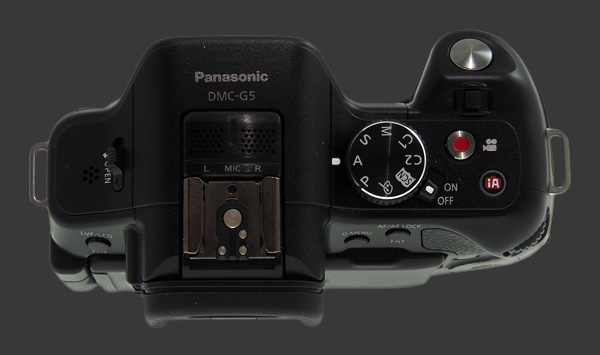
The Video Record button is flush with the surface of the camera. It starts recording video after a small delay and stops it such as the last second or so gets chopped. The exact delay depends on the video mode but is roughly 1s for 1080p. There is no video mode to let the camera prepare itself for filming. This also makes it impossible to setup framing for video since the framing for stills is shown on the LCD until recording starts.
The Intelligent Auto button is there to toggle fully automatic mode without entering the menu system. There is an option to avoid accidents by requiring that button to be held for one second before taking effect. Intelligent Auto mode uses automatic scene recognition and disables most settings except for Drive-Mode and Program-Shift, which is represented graphically instead of showing exposure parameters.
A mode-dial finds itself above a simple power-switch. Both the dial and switch have strong detents to prevent accidental changes. The dial has distinct positions for the traditional PASM modes, plus two custom mode, a position that groups all Scene modes together and another for special effects.
A stereo microphone with optional wind-filter is located at the top of the camera just between the pop-up flash and a standard hot-shoe. The popup flash itself is release by the spring-loaded release to its left. Next to the release is a small speaker.
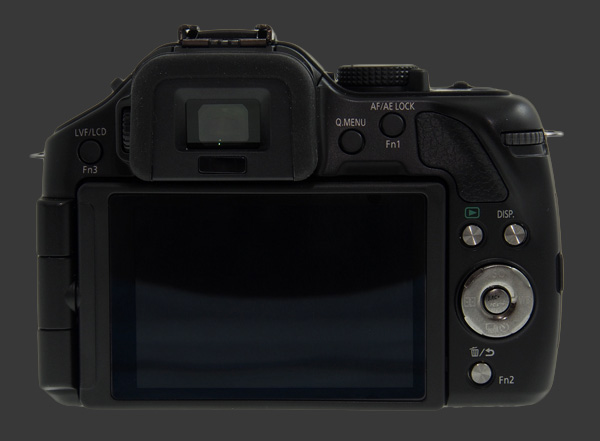
The back of the Panasonic Lumix DMC-G5 is rather busy. The center-piece is a 3" touchscreen LCD with 920K pixels mounted on a swiveling hinge. The display can fold out completely for self-portraits. It can also rotate and fold back to keep the display safely against the camera body. As always, for what the sideway hinge does well, it does other things poorly. Shooting at a high or low angle requires placing the LCD to the side which is awkward to work with. This kind of hinge is also more fragile than a simply tilting one.
The display itself has excellent visibility with a wide viewing angle and good anti-reflection coating. While the image is previewed clearly, this brightness and colors do not reflect the final capture, so this display is far from being Exposure-Priority. There is an optional Live-Histogram based on the display brightness which is of no help either. The very sharp EVF above it has the same issue. An Eye-Start sensor just below the EVF switches automatically between the EVF and LCD with just the right sensitivity.
A high number of buttons are splattered around the back of the G5. To the left of the EVF is a customizable button which by default toggles manually between the EVF and LCD. There are a whopping 32 options that can be chosen, including DOF Preview, Stabilizer, Digital-Level, HDR, Metering, Aspect-Ratio and even functions which have dedicated buttons. Considering its awkward position which requires letting to of the lens barrel, this one is better for function which are not used often. Those who shoot from a tripod will probably want to set it to Stabilizer.
To the right of the LCD are the Q.Menu and a customizable AE/AF-L button. The same 32 options are available but it is useful to keep this one on AE-L. The Q.Menu button brings up a customizable graphical menu to control camera settings such as Picture Style, Flash, Video Quality, Image Resolution, Aspect Ratio, Image Quality, Focus Mode, Focus Area, Metering, Aperture, Shutter-Speed, EC, ISO and WB. Considering so many of these are accessible directly from another button, it makes the Q.Menu busier and slower to use than ideal.
At the right edge of the camera is a clickable control-dial. Pressing it toggles its behavior depending on the exposure mode:
- P: Program-Shift, EC
- A: Aperture, EC
- S: Shutter-Speed, EC
- M: Aperture, Shutter-Speed
- iA: Program-Shift, Nothing
- Effects: Nothing, EC
- Scene: Nothing, EC
Obviously, this means that this mirrorless was a modal interface for EC, unless using the rocker as mentioned earlier. In either case, it is too easy to accidentally dial-in EC.
The Playback button toggles Playback mode. Since the Lumix G5 is Shooting-Priority, tapping the shutter instantly exits Playback mode. The Disp button works the usual way by cycling over different display modes. Skipping over the 4-way controller, one finds the customizable Fn2 button which serves to delete images in Playback mode.
A 4-way controller with central Menu button is the only remaining physical control. Each direction of the controller is assigned a function:
- Up: Selects the ISO between 160 and 12800 or one of two automatic settings. The standard Auto ISO setting use ambient light levels to set the ISO, while the Intelligent Auto ISO setting measures subject movement.
- Right: Selects White-Balance. The screen which appears when Right is pressed is also used to fine-tune white-balance or enable WB bracketing.
- Down: Controls the drive mode. Options are: Single-Shot, Continuous Ultra-High-Speed or High-Speed without preview and Medium-Speed or Low-Speed with preview, Bracketing and Self-Timer 2s, 10s or 3-frames at 10s..
- Left: Selects an AF mode: Pin-Point, Single-Point, Automatic 23-Area, Tracking and Face-Detection. The screen which appears is also used to set the focus point or area.
At the bottom of the camera there is a metal tripod mount directly inline with the optical center of the camera. This is the ideal placement to make panorama photos.
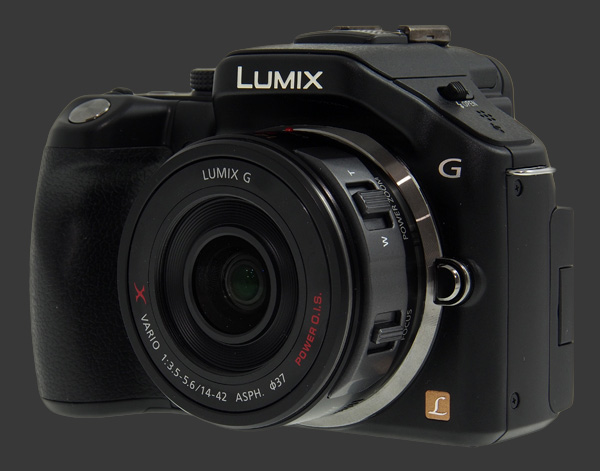
Handling of the Panasonic Lumix DMC-G5 is reasonable but not without its share of frustrations. There are a good number of external buttons which can be customized to access most common functions. This saves the user from having to use the overly long-winded menu system which sometimes spans 8 pages because the font used is so large! While using the G5 at eye-level is possible, most buttons are indistinct and not so well positioned. This is exasperated while using gloves when the control-dial becomes hard to turn because its texture is too fine.
Specifically addressing the Panasonic Lumix G X Vario PZ 14-42mm F3.5-5.6 ASPH OIS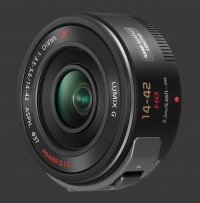
Panasonic Lumix G X Vario PZ 14-42mm F3.5-5.6 ASPH OIS, which is optional to use with the G5, this lens make the whole thing very compact while still providing a standard zoom range. Its electronic zoom is among the best but it clearly does not match the instant response and infinite precision of a mechanical zoom. Videographers may consider the much larger Zuiko M.Zuiko 12-50mm F/3.5-6.3 ED EZ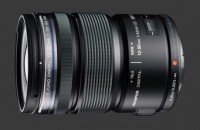
Zuiko M.Zuiko 12-50mm F/3.5-6.3 ED EZ instead which switches between electronic and mechanical zooms. On the other hand, the latter lens is not stabilized.
Panasonic Lumix DMC-G5 Performance - How well does it take pictures?
Performance starts with image quality, which is the criteria used as the foundation of our digital camera ratings. Ergonomic issues may get in the way, but in the end, image quality counts the most. For an ILC, image quality greatly depends on the lens used. While color, noise, exposure and dynamic-range are properties of a camera, distortion, vignetting and chromatic aberrations are properties of the lens. Sharpness and contrast depend on the weakest link. That is, a camera cannot capture more details than a lens lets through. Conversely, it is quite possible for a lens to transmit more details than a sensor can capture.
Image Noise & Details
The Panasonic Lumix DMC-G5 shows good image quality with low image noise up to ISO 1600. However, there is a slight softening of details due to noise-reduction starting at ISO 800. At ISO 1600, enough details disappear to diminish the maximum print size.
ISO 3200 is where noise becomes obvious yet it is not very destructive and can produce very smooth mid-sized prints. At 6400, fine details take a beating yet images remain usable for a mid-size print. The maximum ISO of 12800 is quite noise and should only be used for small 4 x 6" prints or online sharing.
The G5 shows improved image quality over its predecessor. This is good yet one has to take into account that the competition has shown even more improvement for their latest generation of mirrorless cameras. Still, it is not much more than one stop and mostly advantageous at high sensitivities.
Noise-reduction is adjustable from -2 to +2. The default setting of 0 destroys details at all sensitivities. Better results are obtained with a setting of -2 with little difference in image-noise at low sensitivities. From ISO 800 onwards, higher NR hides noise but does even more damage to image details.
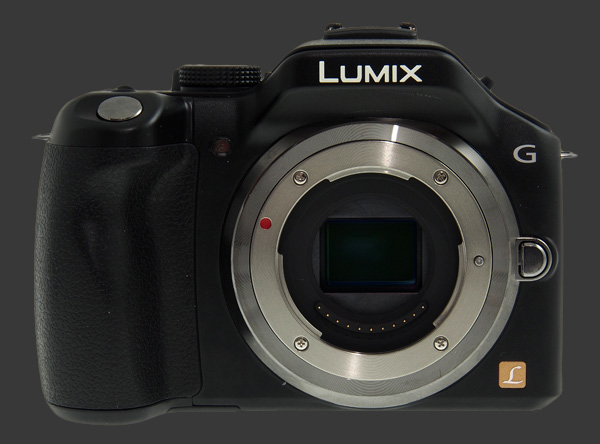
Color & White Balance
This digital camera has six Photo Styles with natural colors falling between the Standard and Natural settings. Default saturation is overly high with a setting of -1 providing more natural results. Still, the red channel remains high in Standard style while the blue channel remains low in Natural style. In the end, Standard with Saturation at -1 was preferred and gives images a little more punch without being too strong.
Automatic While-Balance performance is quite good. It compensates well of a variety of lighting, even indoors which most cameras struggle with. When light levels are low, it can leave a yellow cast which is unfortunately not always previewed on the LCD. To perfectly control color-balance, the Custom White-Balance option is spot on. One very welcome feature of the Panasonic Lumix G5 is that the LCD can be adjusted in terms of Saturation and Tint along 2 axis. This makes it possible to calibrate the display so that one can reliably evaluate WB after capture.
Exposure
The Panasonic G5 has an excellent multi-segment metering system. It is generally conservative and with only occasional over-exposure in the presence of small highlights. For low-contrast scenes, it needs a little positive compensation but less than most cameras.
Dynamic-range of the G5 falls short of class-leading but is good for its sensor-size. It is certainly improved over previous generations.
Auto Focus
The G5 has a fast contrast-detect autofocus system. It locks focus quickly and accurately under most circumstances. Even under low light it rarely takes more than ½s to lock focus. This is certainly a very good performance.
To speed things up from there, Panasonic provides an option called Quick-AF. In this mode, the Panasonic G5 starts focusing as soon as the camera is held steadily, presumably because the photographer is getting ready to take a shot. When the shutter-release is pressed halfway, the G5 then only needs to adjust focus a little. This is very clever and effective.
Speed
This mirrorless camera generally remains quite responsive. Most buttons and dials get an instant response. The following measurements characterize its performance:
- Power-On: Under 1s. Good. Slower with Power-Zoom lenses that need to extend.
- Power-On to First-Shot: 2 seconds. Average.
- Autofocus: ¼s to ½. Excellent.
- Shutter-lag: Nearly instant with about ¼s blackout. Very good.
- Shot-to-shot: Just under 3/4s at low ISO sensitivities. Gets twice as slow at high ISO. Below average.
- Playback: ½s to enter or exit. Average.
- Power-Off: Up to 2 seconds. Average.
- Video: ½s to 1s to start, -1s to stop. Not great but better than average.
For non-action shots, these numbers are very reasonable and the G5 rarely gets in the way of getting a shot. Autofocus speed is particularly good. Shot-to-shot speeds are highly variable and depend on the ISO. Higher ISO require more noise-reduction, even at the minimal setting, and double the time between shots. The odd measurement here is that the G5 cuts off about 1 second from the end of videos.
The Panasonic G5 is powered by a proprietary Lithium-Ion battery which provides 320-shots per charge with 50% flash use. This is below average among mirrorless cameras yet should be enough for a day of shooting, particularly since the built-in flash is of limited use.
Panasonic Lumix DMC-G5 Conclusion
The Panasonic Lumix DMC-G5 delivers nice image quality in a mid-size mirrorless camera with an integrated EVF and customizable interface. This makes is suitable for intermediate photographers who prefer to shoot with the camera at eye-level and use certain controls often.
The G5 turns in a balanced performance. It excels at autofocus speed while being average in terms of image quality and performance when compared to other mirrorless cameras. There are a few usability issues which make certain mistakes more likely but this digital camera does not do anything poorly.
Repeatedly, Panasonic is showing that it can deliver class-leading video quality and their G5 is no exception. The lack of a video mode is worrisome for enthusiasts but casual videographers should be pleased with the details and smooth motion recorded in videos. Stereo sound and good audio controls complete the emphasis on video of this camera.
The mirrorless market as grown which puts the Panasonic G5 among some stiff competition. It distinguishes itself by being among the smallest and one of the cheapest mirrorless cameras with a built-in EVF. This is a big deal for some but obviously not for everyone.
Overall, Panasonic produced a capable digital camera at a compelling price-point aimed directly at intermediate users looking for a relatively light camera for their needs without sacrificing image quality and autofocus speed.
 |
Please Support Neocamera
All information on Neocamera is provided free of charge yet running this website is a huge endeavor. Purchases made via affiliate links found throughout the site help keep it running and up-to-date. There is no additional cost to you, so please consider buying via these links to our affilates:
Thank you for your support!
Panasonic DMC-G5 Highlights
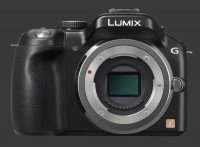
Sensor-Size: 17 x 13mm

Actual size when viewed at 100 DPI
| 16 Megapixels Mirrorless | ISO 160-12800 |
| Micro Four-Thirds Mount 2X FLM | Shutter 1/4000-60s |
| 0.44" Built-in EVF 1.4 Megapixels (0.70X) | Full manual controls, including Manual Focus |
| Automatic Eye-Start sensor | Custom white-balance with 2 axis fine-tuning |
| 2 Axis Digital Level | Spot-Metering |
| Built-in Dust Reduction | Hot-Shoe |
| 6 FPS Drive, Unlimited Images | Lithium-Ion Battery |
| 1920x1080 @ 60 FPS Video Recording | Secure Digital Extended Capacity |
| 3" LCD 920K Pixels |
Updates
2025.11.13

Best Gifts for Photographers in 2025 by Budget
The annual Neocamera Photography Gift Guide updated to 2025. Find great gifts for photographers with any price budget.
2025.07.07

Stellar Photo Recovery Review
Review of Stellar Photo Recovery V12. This Windows and MacOS software can recover photos and videos in a huge number of formats from memory cards, USB drives, SSDs and HHDs.
2025.05.14

Huion Kamvas 13 Gen 3 Review
In-Depth review of the Huion Kamvas 13 Gen 3 Pen Display Tablet for photographers and graphic artists.
2025.01.18

Fujifilm GFX 2025 Lens Roundup
Lens Review roundup of Fujifilm GFX Medium-Format lenses. Quality, performance and handling of the GF20-35mm F/4R WR, GF30mm F/3.5 Tilt-Shift and the GF55mm F/1.7.
2024.11.18

Best 2024 Photography Gifts for Every Budget
Great gifts for photographers and photo enthusiasts selected for every budget among the best products of 2024.
2024.08.07

Eye Protection Tips for Professional Photographers
The four main considerations for professional photographers regarding eyewear.
2024.07.14

Fujifilm X100VI Review
Flagship fixed-lens compact digital camera with a 40 MP sensor and Image-Stabilization, a first for the series. Retro design featuring dual control-dials, plus direct ISO, Shutter-Speed and EC dials. Its hybrid viewfinder can switch between EVF and OVF mode.
2024.05.09

Fujifilm GFX100 II Review
Flagship 102 Megapixels Medium-Format Mirrorless Digital Camera with 8-Stop 5-Axis IBIS, 8 FPS Drive, 8K Video and 400 MP Super-Resolution capture in a weatherproof and freezeproof body with dual control-dials and dual memory-card slots.
2024.04.03

Fujifilm X-T5 Review
Newest Fujifilm flagship boasting a 40 MP APS-C sensor, 5-axis IBIS with 7-stop efficiency, 15 FPS continuous drive, 6.2K Video capture, dual control-dials and dual SDXC UHS-II slots in a sturdy weatherproof and freezeproof body.
2023.11.20

Best Digital Cameras of 2023
Find out which are the Best Digital Cameras of 2023. All the new Mirrorless Digital Cameras from entry-level to high-end professional.
2023.07.10

Fujifilm X-H2 Review
40 Megapixels APS-C Hybrid Mirrorless Digital Camera with 7-stop IBIS. Fastest shutter ever and 8K video capture. Large builtin EVF with 0.8X magnification and 5.8 MP, plus an Eye-Start Sensor. Packed with features and large number of controls in a weatherproof and freezeproof body.
2023.05.07

Sony FE 20-70mm F/4G Review
Review of the unique Sony FE 20-70mm F/4G lens. The optical zoom of this lens spans ultra-wide-angle and medium focal-length coverage, making it one of the most versatile Full-Frame lenses on the market.












